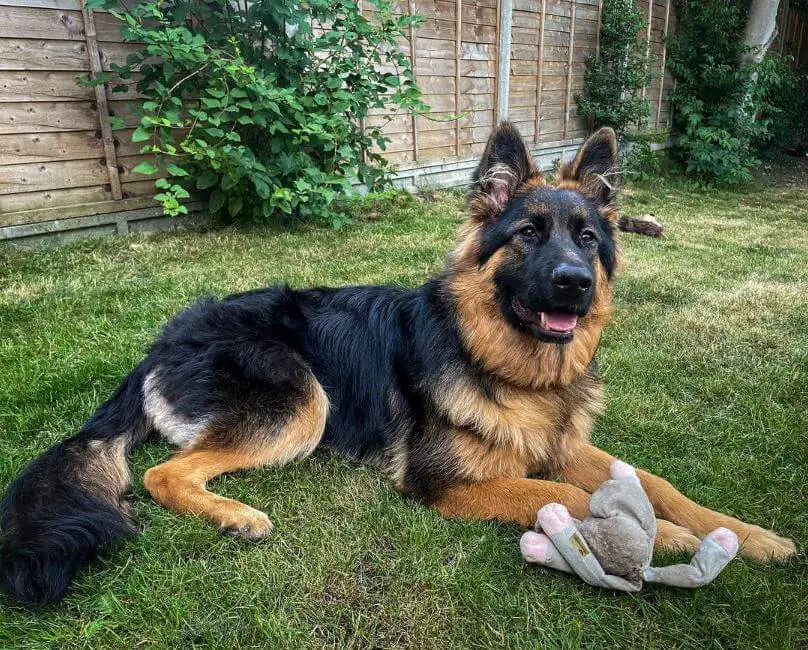Have you ever wondered why your furry friend is always right by your side, following you wherever you go? If you have a dog that constantly sticks to your side like a shadow, you may have wondered about the reasons behind this behavior. As a dog owner, it’s natural to be curious about your dog’s actions and what they might mean. In this article, we’ll explore the reasons why dogs tend to follow their owners everywhere and shed some light on this common behavior. We’ll also discuss the potential benefits and challenges of having a shadow dog and provide some tips on how to manage this behavior.

Reasons Why Dogs Follow Their Owners Everywhere:
1 – Instinctual Pack Behavior: Dogs are descendants of wolves, which are pack animals that rely on cooperation and social bonds to survive. Your dog may have a natural instinct to stick close to their pack leader, which in this case, is you. This behavior is rooted in their genetic makeup and can manifest as a strong bond between you and your dog.
2 – Attachment and Bonding: Dogs are social animals that form strong emotional bonds with their owners. They see you as their source of security, love, and companionship. Your presence makes them feel safe and happy, and they want to be close to you at all times.
3 – Seek Attention and Affection: Dogs are naturally social and crave attention and affection from their owners. When your dog follows you everywhere, it may be their way of seeking your attention and affection. They enjoy being close to you, receiving pets, and being in your company.
4 – Anxiety or Fear: Some dogs may have separation anxiety or fear of being alone, which can lead to them following their owners everywhere. They may feel anxious or stressed when left alone and seek comfort by staying close to you.
5 – Routine and Habit: Dogs are creatures of habit and may have learned that following you everywhere is a routine or habit that they’ve developed over time. For example, if you always take your dog for walks or feed them at certain times of the day, they may have learned to anticipate these activities and follow you around in anticipation.

Benefits and Challenges of Having a Shadow Dog:
Having a dog that follows you everywhere can have both benefits and challenges.
Benefits:
1 – Strong Bond: Having a dog that sticks close to you can strengthen the bond between you and your furry friend. It can create a deep sense of companionship and loyalty.
2 – Emotional Support: Your dog’s constant presence can provide emotional support and comfort, especially during times of stress or anxiety. Many dog owners find solace in their dog’s unwavering companionship.
3 – Increased Safety: If your dog is always by your side, it can provide an added layer of security, as they may alert you to potential dangers or intruders.
Challenges:
1 – Dependency: Constantly relying on you for attention and companionship may result in your dog becoming overly dependent on you. This can lead to separation anxiety or difficulty being alone.
2 – Limitations in Activities: Having a dog that follows you everywhere can limit your freedom to move around or engage in certain activities without your furry companion by your side.
3 – Potential Behavior Issues: If your dog becomes overly attached and follows you everywhere, it may develop behavior issues, such as separation anxiety, fear of being alone, or over-attachment to you.

Managing a Shadow Dog:
If you find your dog’s constant following behavior challenging to manage, here are some tips to help:
1 – Gradual Desensitization: Gradually desensitize your dog to being alone by creating positive experiences when you are not around. Start with short periods of separation and gradually increase the duration, rewarding your dog with treats, toys, and praise for calm behavior.2 – Establish a Routine: Create a consistent routine for your dog that includes designated alone time. This can help your dog develop a sense of predictability and security, reducing their need to follow you everywhere.
2 – Establish a Routine: Create a consistent routine for your dog that includes designated alone time. This can help your dog develop a sense of predictability and security, reducing their need to follow you everywhere.
3 – Provide Mental Stimulation: Engage your dog in mentally stimulating activities, such as puzzle toys, treat-dispensing toys, and training sessions. This can help keep their minds occupied and reduce their dependency on constantly being by your side.
4 – Encourage Independence: Encourage your dog to be independent by gradually increasing the distance between you and rewarding them for being calm and relaxed when you are not in their immediate vicinity. This can help them build confidence and feel more comfortable being alone.
5 – Training and Distraction Techniques: Teach your dog basic obedience commands like “sit,” “stay,” and “go to your place” to redirect their attention and provide them with a sense of purpose. You can also use distraction techniques, such as providing them with a special toy or treat, to redirect their focus away from following you.
6 – Seek Professional Help: If your dog’s following behavior becomes excessive or is causing distress for you or your dog, consider seeking help from a professional dog trainer or a veterinary behaviorist. They can provide personalized guidance and behavior modification techniques to address the issue.

In conclusion, having a dog that follows you everywhere can have its benefits and challenges. It may stem from instinctual pack behavior, attachment and bonding, seeking attention, anxiety or fear, or routine and habit. While it can create a strong bond and provide emotional support, it may also lead to dependency and limitations in activities. By understanding the reasons behind this behavior and implementing appropriate management techniques, you can help your dog become more independent and reduce their need to constantly follow you everywhere. Remember, every dog is unique, so be patient and consistent in your approach, and seek professional help if needed. With proper training, routine, and positive reinforcement, you can help your dog feel secure, confident, and loved, while also maintaining a healthy balance between independence and companionship.
